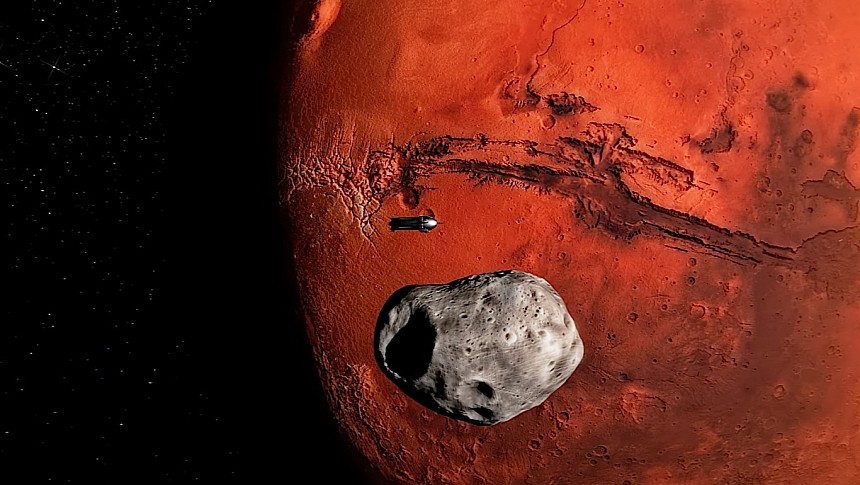Even in the long-gone times when technology was unable to help us with our dreams of space exploration, humans still managed to leave the confines of our own planet thanks to imagination. In our species' mind, humans have already done that long before the first rocket actually took off. And even if by today's standards some of the early ideas may seem a bit ridiculous, some of them are still fascinating to explore with the help of modern technology.
I'm not sure how many of you are familiar with the Flash Gordon universe. It started out back in the 1930s as a comic strip describing the adventures of a polo player, his love interest, and a scientist as they try to stop planet Mongo and its ruler, Ming the Merciless, from destroying our own world.
The main tool they used for the task of traveling through the solar system and the Universe was a rocket ship constructed by the scientist. The guy, named Dr. Hans Zarkov, called it Copernicus in the comic books, and it was a vehicle of utmost importance for the story.
For several years now we've gotten you used to seeing animations of rockets and spaceship concepts that were studied by real humans, but never came to be. We owe many of those stunning images to a CGI specialist going by the name Hazegrayart.
The same name is behind this insane animation of the Copernicus as it travels the length of our solar system, then heads out into space in search of Mongo. To our knowledge, this is the first time Hazegrayart has rendered a spaceship from an imaginary universe, and we're not sorry about that in the slightest.
We get to see the rocket, small enough to carry just three people, as it departs in an unconventional way from the shores of a village, heading into space to visit all the planets in the solar system, starting with Mars.
It then goes interstellar, heading out for Mongo, which it eventually finds. It lands there in a snowy canyon, and we can only imagine what happens next.
Many of the ship's gear is left for us to imagine. We're not told what powers this digital incarnation (that doesn't matter much in the Flash Gordon comics, TV series, and movies), or how fast it can travel, other that it's some kind of fusion drive making motion possible.
We also know it can go interstellar and can withstand all the rigors of such an activity, from radiation to temperature. The interior, not visible in this CGI, includes a command center with a viewscreen and a combination of mechanical UIs and touchscreens.
For scientific instruments, the Copernicus would use stuff like telescopes and spectrometers, which it can use for a variety of tasks, from asteroid mining to planetary exploration.
There are, of course, many more starships made with the power of today's computers for entertainment purposes (just have a look at the Star Trek universe, for instance) but I must say we wouldn't mind in the slightest if Hazegrayart would bring back into the spotlight the more exotic designs of humanity's early space exploration stories, the ones everyone else seems to ignore.
We'll see if that'll be the case, but until we do you can enjoy the Flash Gordon rocket ship in the four-minute clip below.
The main tool they used for the task of traveling through the solar system and the Universe was a rocket ship constructed by the scientist. The guy, named Dr. Hans Zarkov, called it Copernicus in the comic books, and it was a vehicle of utmost importance for the story.
For several years now we've gotten you used to seeing animations of rockets and spaceship concepts that were studied by real humans, but never came to be. We owe many of those stunning images to a CGI specialist going by the name Hazegrayart.
The same name is behind this insane animation of the Copernicus as it travels the length of our solar system, then heads out into space in search of Mongo. To our knowledge, this is the first time Hazegrayart has rendered a spaceship from an imaginary universe, and we're not sorry about that in the slightest.
We get to see the rocket, small enough to carry just three people, as it departs in an unconventional way from the shores of a village, heading into space to visit all the planets in the solar system, starting with Mars.
It then goes interstellar, heading out for Mongo, which it eventually finds. It lands there in a snowy canyon, and we can only imagine what happens next.
Many of the ship's gear is left for us to imagine. We're not told what powers this digital incarnation (that doesn't matter much in the Flash Gordon comics, TV series, and movies), or how fast it can travel, other that it's some kind of fusion drive making motion possible.
We also know it can go interstellar and can withstand all the rigors of such an activity, from radiation to temperature. The interior, not visible in this CGI, includes a command center with a viewscreen and a combination of mechanical UIs and touchscreens.
For scientific instruments, the Copernicus would use stuff like telescopes and spectrometers, which it can use for a variety of tasks, from asteroid mining to planetary exploration.
There are, of course, many more starships made with the power of today's computers for entertainment purposes (just have a look at the Star Trek universe, for instance) but I must say we wouldn't mind in the slightest if Hazegrayart would bring back into the spotlight the more exotic designs of humanity's early space exploration stories, the ones everyone else seems to ignore.
We'll see if that'll be the case, but until we do you can enjoy the Flash Gordon rocket ship in the four-minute clip below.










